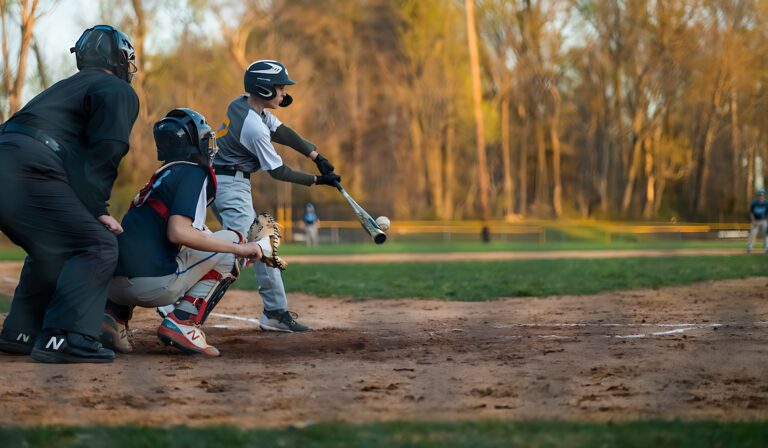What Does SU Mean In Baseball?
Are you a baseball fan looking to understand the intricacies of the game’s pitching strategies? Do terms like “setup” and “closer” leave you scratching your head? Fear not, as we delve into the world of baseball’s pitching hierarchy. The term “SU” is one of the most important and widely used terms in modern baseball. It refers to the role of the “setup man,” a pitcher who enters the game in the eighth inning and is tasked with holding a lead until the ninth inning when the team’s closer takes over. Understanding the role of the SU is crucial for any fan looking to fully comprehend the strategy behind a team’s bullpen management. So, let’s take a closer look at what it means to be a setup man in baseball.
What is the “SU” position in baseball?
In baseball, the term “SU” stands for “set-up” and refers to the role of a relief pitcher who enters the game in the eighth inning with the objective of preserving a lead for the team closer to finishing the game. The SU pitcher’s job is to pitch effectively and get the opposing team out quickly, allowing the closer to enter the game in the ninth inning with a lead intact.
The SU pitcher’s role is considered critical in the modern game of baseball, where managers rely heavily on their bullpen to secure victories. Often, the most effective SU pitchers possess a high strikeout rate and the ability to induce ground balls, limiting the damage caused by opposing hitters.
What is the purpose of an SU pitcher?
An SU pitcher, or a starting pitcher, is a vital position in the game of baseball. The primary purpose of an SU pitcher is to start the game and pitch as many innings as possible while keeping the opposing team’s offense from scoring runs. The SU pitcher is typically the best pitcher on the team, and their performance sets the tone for the rest of the game.
The SU pitcher is responsible for setting the pace of the game by throwing strikes and getting ahead in the count. They must also have a variety of pitches in their repertoire to keep the opposing hitters off balance. A good SU pitcher has the ability to induce ground balls, pop-ups, and strikeouts, and can also field their position well.
Additionally, the SU pitcher must be mentally strong and able to handle pressure situations. They must be able to make quick decisions on the field and adjust their pitching strategy based on the current game situation.
Can a closer be a setup pitcher?
Yes, a closer can also be a setup pitcher. In fact, it’s not uncommon for pitchers to transition between different roles throughout their careers. Let’s take a look at the different types of pitchers in baseball.
Starter:
A starting pitcher is typically expected to pitch the first few innings of a game, with the goal of going deep into the game and giving their team a chance to win.
Long reliever:
A long reliever is a pitcher who can come in to replace a struggling or injured starting pitcher, and is expected to pitch multiple innings to help preserve the bullpen.
Middle reliever:
A middle reliever is a pitcher who typically comes in after the starting pitcher has been pulled and before the setup man and closer are called upon. Their job is to bridge the gap between the starter and the late-inning relievers.
Setup man:
The setup man is a pitcher who typically comes in to pitch the 8th inning and set the stage for the closer. They are often used in high-leverage situations, such as with runners on base and a close game.
Closer:
The closer is the final pitcher in a game and is responsible for preserving the win. They typically come in to pitch the 9th inning and are expected to get the final outs of the game.
How are setup pitchers evaluated?
Setup pitchers are evaluated based on their ability to maintain the lead and get their team through the middle innings successfully. They are often called upon in the seventh or eighth inning to protect a lead and bridge the gap to the closer.
To evaluate the effectiveness of a setup pitcher, statisticians use a metric called the “hold.” A hold is awarded to a pitcher who enters the game in a save situation (typically the seventh or eighth inning) and maintains the lead without giving it up until the closer enters the game. A hold is a way to acknowledge the importance of setup pitchers and the impact they can have on the outcome of the game.
In addition to holds, setup pitchers are evaluated based on their other statistics, such as their earned run average (ERA), walks and hits per innings pitched (WHIP), strikeouts per nine innings (K/9), and strikeout-to-walk ratio (K/BB). These metrics provide insight into a pitcher’s ability to control the game and limit damage. You may read also the guide on What Does ALCS Stand for in Baseball
What is LRP vs MRP vs Su in baseball?
In baseball, LRP, MRP, and SU are all terms used to describe different types of relief pitchers:
- LRP stands for Long Relief Pitcher. This type of pitcher is typically used in games where the starting pitcher has been knocked out early or the team is losing by a large margin. The LRP is brought in to eat up innings and keep the score close until the offense can get back into the game.
- MRP stands for Middle Relief Pitcher. This type of pitcher is typically used in the middle innings of a game, usually between the 4th and 7th innings. The MRP is brought in to bridge the gap between the starting pitcher and the setup man or closer.
- SU stands for Setup Pitcher or Setup Man. This type of pitcher is typically used in the 8th inning of a game to set up the closer for the 9th inning. The SU is usually one of the best relievers on the team and has the ability to get important outs in the late innings.
It’s important to note that these roles are not set in stone, and pitchers can be used in different roles depending on the situation and the team’s needs.
Conclusion
In conclusion, the term “SU” in baseball is an abbreviation for “setup,” which refers to a relief pitcher whose role is to preserve a lead until the team’s closer enters the game in the final inning. The setup man’s importance cannot be understated, as they are responsible for maintaining a team’s advantage and ensuring that the closer can secure the win. Understanding baseball terminology such as SU can be helpful for fans and players alike, as it enhances the appreciation and comprehension of the game.
FAQs
What does MRP mean in baseball?
In baseball, MRP stands for “Middle Relief Pitcher”. MRP refers to a relief pitcher who typically enters the game after the starting pitcher has been replaced and before the closer comes in to finish the game. MRP’s role is to bridge the gap between the starting pitcher and the closer.
How many innings does an SU pitch?
An SU, or setup pitcher, typically pitches one inning in a game of baseball. In some cases, they may pitch two innings but it is rare for them to pitch more than that. Sometimes, they may only need to get one or two outs to record a hold.
Who are the best setup pitchers in MLB history?
Some of the best setup pitchers in MLB history include Mariano Rivera, who revolutionized the role with the New York Yankees, Mike Marshall, who holds the record for most games pitched in a season, and Trevor Hoffman, who ranks second all-time in career saves. Other notable names include Rollie Fingers, Goose Gossage, and Dennis Eckersley.
Can more than one pitcher earn a hold?
Yes, it is possible for more than one pitcher to earn a hold in a single game, as long as they meet the criteria for the hold. To earn a hold, a relief pitcher must enter the game with a lead, pitch at least one inning, and leave the game with the lead intact.







